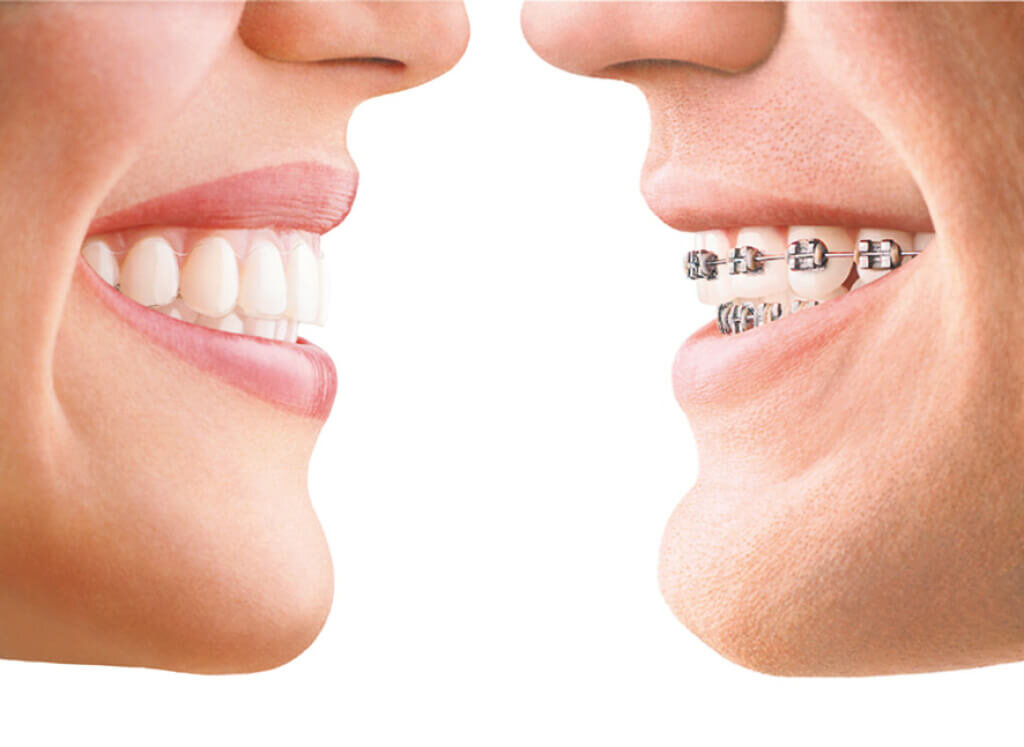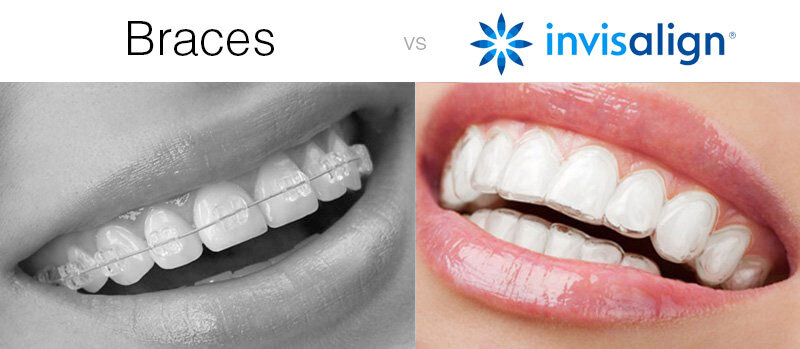What to Anticipate During Your Invisalign Journey: A Comprehensive Summary
What to Anticipate During Your Invisalign Journey: A Comprehensive Summary
Blog Article
Invisalign vs. Traditional Dental braces: Which Choice Is Right for You?
When thinking about orthodontic therapy, the option in between Invisalign and conventional dental braces provides a number of vital variables that warrant mindful evaluation. Invisalign offers a very discreet option with detachable aligners, while standard braces supply an extra noticeable yet reliable option for extreme misalignment.
Review of Therapy Alternatives

In comparison, traditional braces include metal braces and cables that are bonded to the teeth. This method applies continuous stress in time to accomplish alignment. While efficient for complicated orthodontic concerns, standard braces need regular visits for modifications and can present difficulties in maintaining dental hygiene because of the trouble of cleaning about braces and cables.
Both options have their benefits, and the choice frequently depends upon details oral problems, way of life choices, and client conformity. Inevitably, consulting an orthodontic specialist is crucial for establishing the most suitable treatment plan customized to specific requirements. Recognizing the nuances of each choice can significantly affect the general success of orthodontic treatment.
Visual Factors To Consider
A substantial element affecting the choice between Invisalign and conventional braces is the aesthetic charm each therapy uses. Invisalign aligners are crafted from clear plastic, making them basically invisible when worn.
In comparison, traditional dental braces include metal brackets and wires, which can be extra noticeable. While improvements in orthodontic technology have actually brought about the growth of smaller sized braces and colored elastics, typical dental braces still preserve a more obvious profile. For some individuals, the presence of dental braces might prevent them from seeking needed treatment.
Eventually, the choice in between Invisalign and conventional braces might rest on individual preferences pertaining to visual appeals. Clients who prioritize discernment commonly lean toward Invisalign, while those who are less concerned about exposure may choose conventional braces. Understanding the aesthetic effects of each option is vital for making a notified choice that lines up with one's lifestyle and choices.
Convenience and Convenience

In terms of benefit, Invisalign aligners are removable, enabling people to appreciate their favored foods without constraint and keep ideal dental health. Cleaning and flossing are simplified, as the aligners can be taken out during these regimens, whereas traditional dental braces need cautious maneuvering around braces and wires.
Furthermore, Invisalign's progressive system enables less orthodontic gos to. Individuals typically obtain several sets of aligners at the same time, which can streamline the treatment process and minimize time invested in the orthodontist's chair. In contrast, typical dental braces necessitate routine changes, making them less convenient for those with hectic schedules. original site Invisalign. Generally, the convenience and ease of Invisalign make it an appealing choice for numerous individuals seeking orthodontic treatment.
Therapy Period and Efficiency
While both Invisalign and traditional braces are efficient in fixing oral misalignments, the period of therapy can vary dramatically between both alternatives. Generally, Invisalign therapy can take anywhere from 12 to 18 months, depending on the intricacy of the case. The clear aligners function by progressively shifting teeth right into their wanted placements, and routine follow-ups with an orthodontist assistance make certain development continues to be on the right track.
In contrast, conventional dental braces frequently call Visit Your URL for a longer commitment, normally ranging from 18 months to 3 years. This is due to their set nature and the use of braces and cords, which can be extra effective for serious imbalances and complex situations (Invisalign). The therapy efficiency of typical braces is well-documented, as they permit specific adjustments and higher control over tooth movement
Ultimately, the option in between Invisalign and standard dental braces may hinge on both the anticipated therapy duration and the certain oral problems available. Consulting with an orthodontist is essential, as they can offer customized referrals based upon individual requirements, making sure the selected method straightens with desired durations and results.
Cost Contrast and Insurance Policy Options
Expense plays a considerable duty in the decision-making procedure for individuals taking into consideration orthodontic therapy, whether choosing Invisalign or traditional braces. Generally, the expense of Invisalign ranges from $3,000 to $8,000, while typical dental braces normally cost between $2,000 and $6,000. Elements affecting these prices consist of the complexity of the instance, the period of treatment, and geographical location.
Many dental insurance policy plans give partial coverage for orthodontic therapies, however the specifics can vary extensively. Typically, traditional braces might be a lot more regularly covered by insurance strategies contrasted to Invisalign, which some insurers categorize as a cosmetic procedure.
Additionally, a number of orthodontic methods provide flexible settlement plans, making both treatment choices a lot more available. Patients need to ask concerning prospective financing options and discount rates for upfront settlements. Examining the overall cost, consisting of insurance coverage advantages and repayment strategies, is important for making an educated decision that lines up with both aesthetic choices and budget plan considerations.

Final Thought
In summary, the option in between Invisalign and standard braces rests on several aspects, including aesthetic preferences, convenience, therapy duration, and expense. Invisalign provides a very discreet, removable option that assists in oral hygiene and dietary adaptability, while traditional dental Web Site braces may be much more ideal for complex oral issues and frequently come at a lower rate point. Ultimately, assessment with an orthodontist is necessary to analyze specific situations and determine one of the most ideal therapy option for accomplishing optimal dental placement.
When taking into consideration orthodontic treatment, the selection in between Invisalign and conventional dental braces presents several essential variables that warrant cautious evaluation.Contrasting Invisalign and typical braces exposes unique therapy options for orthodontic correction.While both Invisalign and traditional braces are effective in fixing dental imbalances, the duration of therapy can differ dramatically in between the two options.Price plays a considerable role in the decision-making process for individuals thinking about orthodontic therapy, whether opting for Invisalign or typical dental braces.In recap, the choice between Invisalign and typical braces hinges on multiple elements, including visual preferences, comfort, therapy period, and expense.
Report this page